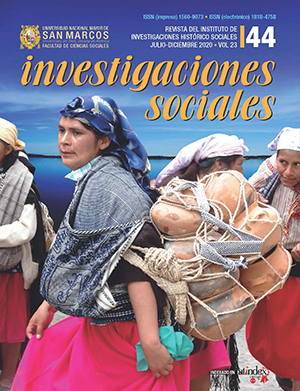Formation of the colonial agrarian system in Piura. Notes about the city of San Miguel and the birth of hacienda Tangarará, 16th-17th centuries
DOI:
https://doi.org/10.15381/is.v0i44.19572Keywords:
Hacienda, Tangarará, Piura, lands, cityAbstract
In this essay, we present some ideas and data records compiled in Piura and Lima archives about how the economy of Piura between 1532 and 1650 will undergo a socioeconomic shift from agriculture to farming. This historical dynamic accompanied by an explanation about the movement of the city of San Miguel de Piura; the use of salaried peonage, the colonization of indigenous peasants, and the labor of black slaves and freedmen; which will make possible the formation of a colonial agrarian system in the ‘corregimiento’ and province of Piura. In this case, the first stage of the viceregal agrarian structure begins to be built with the organization and distribution of land to indigenous peoples and communities that Viceroy Francisco de Toledo deploys since 1572, to later stabilize the ‘corregimiento’ of Piura with the refounding of the city in 1588 by Viceroy Conde del Villar in its current location. The second stage continues with the privatization process of the surrounding lands to promote haciendas and cattle ranches between the city and the territory located at the foot of the Andes mountain range in the seventeenth century. Finally, we explore some variables on the process of formation and consolidation of hacienda Tangarará and its struggles with the viceregal State, reviewing notarial documents and civil files.
Downloads
Published
Issue
Section
License
Copyright (c) 2021 César Espinoza Claudio

This work is licensed under a Creative Commons Attribution-NonCommercial-ShareAlike 4.0 International License.
AUTHORS RETAIN THEIR RIGHTS:
a. Authors retain their trade mark rights and patent, and also on any process or procedure described in the article.
b. Authors retain their right to share, copy, distribute, perform and publicly communicate their article (eg, to place their article in an institutional repository or publish it in a book), with an acknowledgment of its initial publication in Investigaciones Sociales.
c. Authors retain theirs right to make a subsequent publication of their work, to use the article or any part thereof (eg a compilation of his papers, lecture notes, thesis, or a book), always indicating the source of publication (the originator of the work, journal, volume, number and date).













